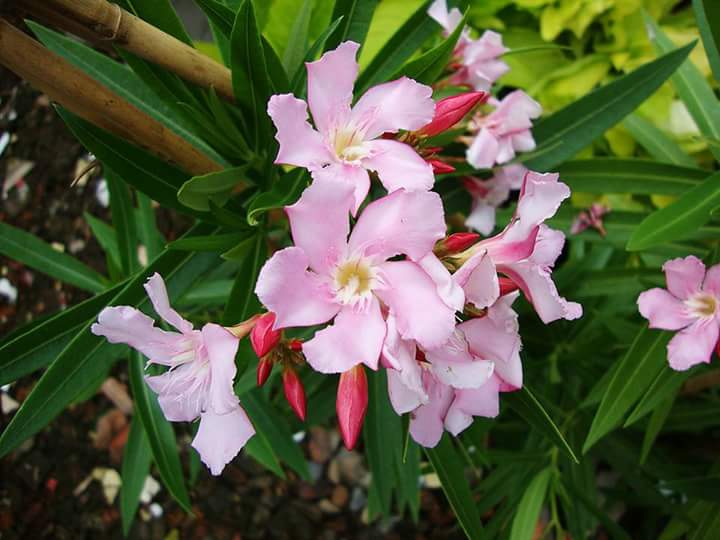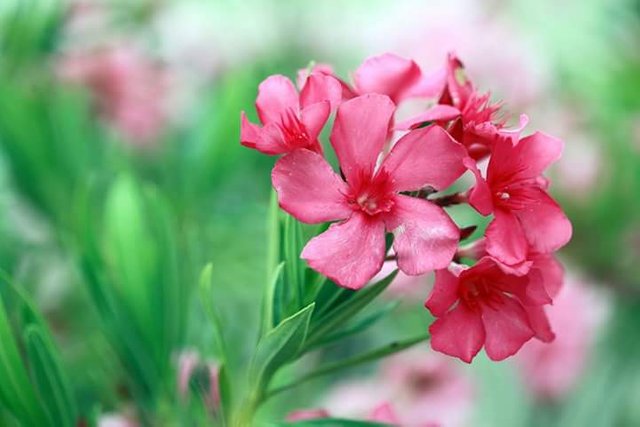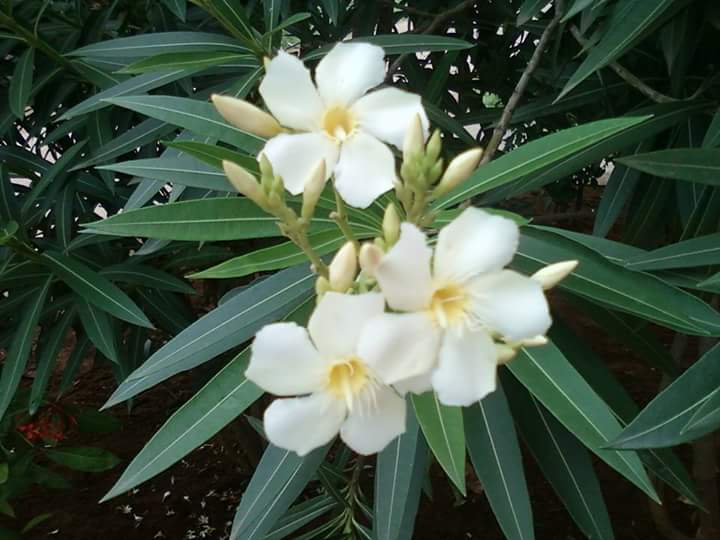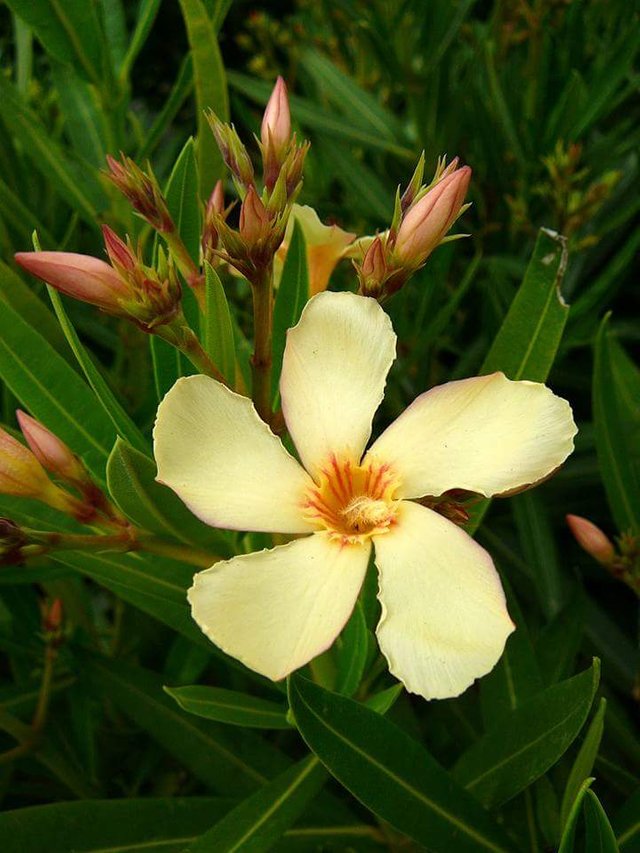Oleander - Beautiful but Deadly.
Nerium oleander (Oleander) is a large evergreen shrub or small tree suitable for warm and temperate climates. It has a good variety of flower colours, and has long shiny dark green leaves. The variegated variety has bi-colour leaves of green and yellow. Oleanders flower for most of the year, and are happiest in a full sun position. They will also tolerate coastal conditions. Once established they are very hardy. Care must be taken when handling all parts of this plant as it is toxic. Oleanders grow well in Sydney, where these photos were taken.
The story of oleander flowers, the symbol of romance and charm, is described in Greek mythology: The young man named Leander swims every night to face the young girl sitting on the opposite bank of the Greek Sea (Marmara) and see him. Again in a stormy september, Leander, who is burning with the love of his lover, leaves herself in horny waters. Leander, unable to withstand the violence of the storm, is about to arrive on the opposite shore and is dead from exhaustion in the dark waters. The horny waves leave the inanimate body of the flock to the white sands, struggling to see once again their love. Seeing this, the young girl puts the oleander flowers he collects for his lover into Leander's lifeless body.
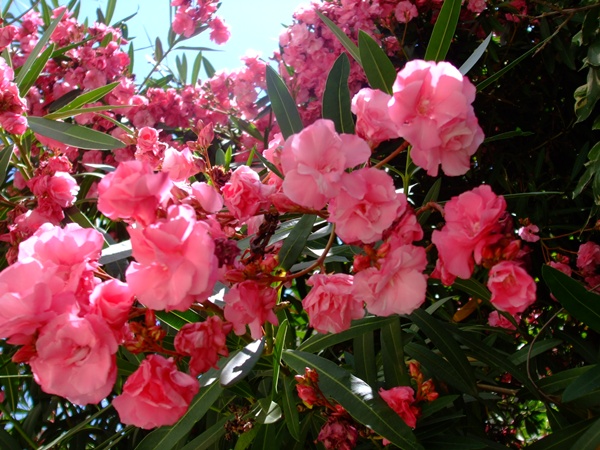
Since that day, oleander flowers have embellished as the symbol of Leander's endless love.
The common name of the oleander, called "oleander" on many foreign languages, comes from Leander, who is strangled to see his love. In our country, it is also known as the tree-tree, the tree-tree and the tree of the struggle. You know the phrase "the roots of my stomach." (For example, the expression "eat the roots of my fortune", which is often used by mourning mothers for meals!) The "wreck" here is actually the zakkumun itself. Oleander, a very poisonous plant, was also used as a potent poison in ancient times. Because of this feature, in some regions it is still known as "killing donkey".
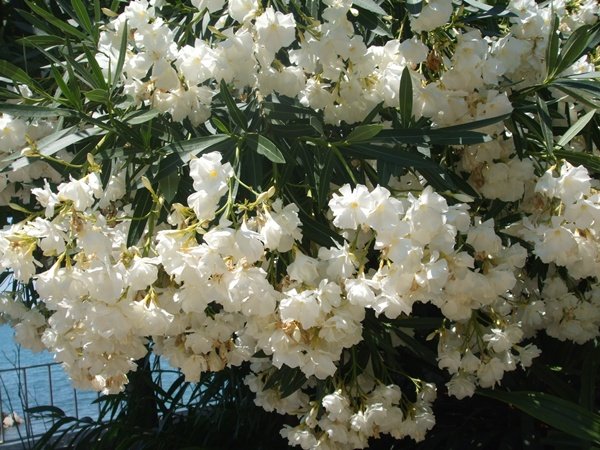
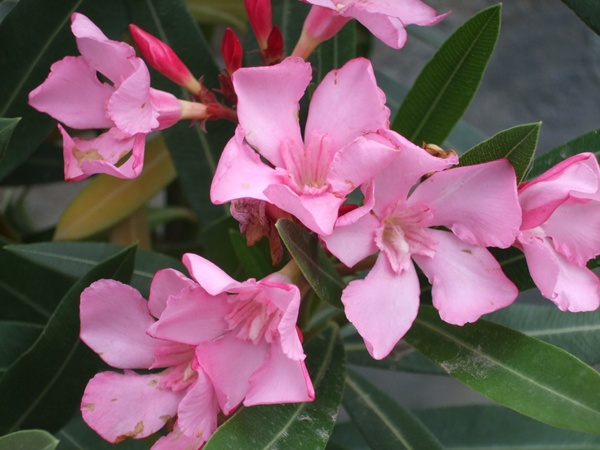
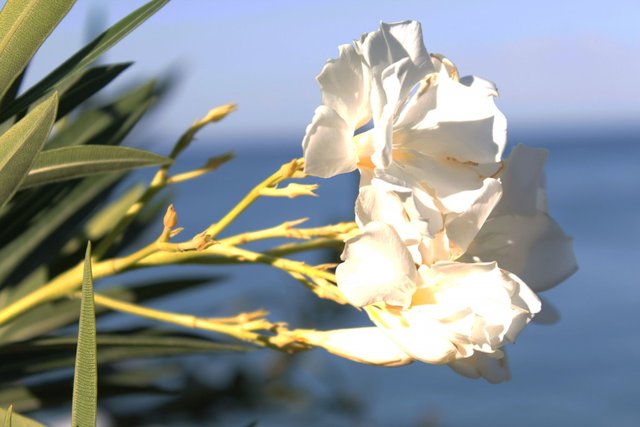
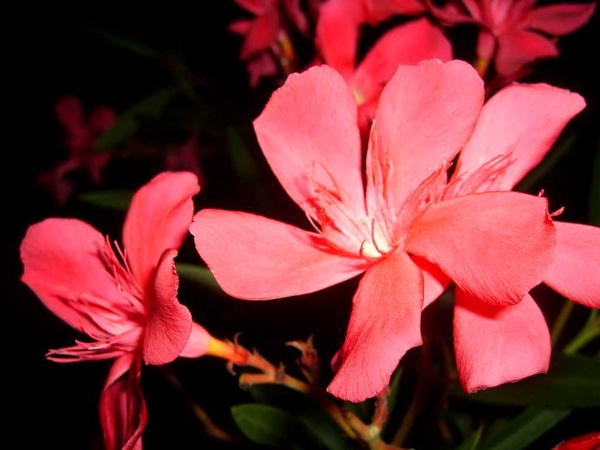
Picture source
Some very interesting info here, and great pics! You won the Silly Sausage Award, well done !
thank you.. :)
Kaner (Nerium oleander/indicum) is an ornamental shrub or small, densely branched tree, 1 to 10 m tall in the Dogbane family Apocynaceae. Leaves are in pairs of three or whorled, very green, leathery, narrowly elliptic to linear entire. Flowers grow in clusters in terminal branches, each 2.5 to 5 cm, funnel-shaped with five lobes, fragrant, various colors from pink to red, white, peach, and yellow.
The common oleander is one of most poisonous plants that have been shown to contain nondigitalis cardiac glycosides. Oleander is an idiom for plants of the N. oleander L, N. indicum, and, Nerium odorum, species. Common names include soland, lorier bol, rosebay, and rose laurel and kaner.
The oleander is most prevalent, and alluring flowers make it a particular hazard for accidental ingestion. The plant also has shown toxicologic importance for accidents when used in folk medicines, when adults unknowingly eat parts of the plant, or food that has come into contact with the plant, such as hot-dog sticks, and in homicides or suicides. Also, as our case illustrates, toxicities are not limited to temperate climates.
All parts of the oleander plant contain cardiac glycosides, including the roots and the smoke produced from burning, as heat does not inactivate the glycosides. The toxic component are the two potent cardiac glycosides, oleanderin and neriine, which can be isolated from all parts of the plant, Both are very similar to the toxin of Foxglove.[4] Both have positive inotropic, negative chronotropic, and cross reactivity. This includes direct glycoside poisoning of the sodium-potassium pump of the heart and increased vagotonia. Most symptoms from oleander poisoning are cardiac and gastrointestinal in nature and appear four hours after the ingestion.
Source
OLEANDER IN THE QUR'AN..
Oleander, meaning turkish bitterness and poison, is a deadly tree believed to be in Hell according to Islamic religion. Such narrations about the oleander tree are actually more than information, rather than discourse. Because in the Qur'an there is a clear surplus of oleander words for a few periods and months. I should not pass on these verses before sharing with you;
"Of course, the oleander tree is the food of sinners in Hell. The oleander tree is like a molten metal. It boils like a boil of hot water in people's wombs "(Ed-Duhan, 44 / 43-46)
"Is this meal better for a meal? Or is it an oleander tree? Surely We made him a trouble for the wrong-doers. It is a tree from the bottom of hell. His buds are like heads of demons. Hellstools then eat their places and their bellies with them. Then they shall be given drink upon their oleander tree, with drink mixed with boiling water "(es-Saffat, 37, 62-67)
"Then you, O those who stray from the right path and deny the truth! You will surely eat the oleander tree in hell. You will fill your bellies with it. You will drink boiling water on the threshing floor, "(al-Vakia, 56 / 51-55).
Apart from these; "If a drop of Hell's Zakkum was dropped on the earth, it would poison people's lives" (al-Musnad, Cairo 1313, I, 301).
Source:
Source:
Source:
Source:
source:
Source:
Oleander is a medically used plant. Experiments are done in cancer drugs. Oleandrin which is in the chemical content of oleander is used medically. Included are diuretic and heart strengthening effects. If the prescribed amount of treatment is exceeded, it causes severe poisoning which is manifested by heart failure, vomiting and diarrhea.
These medications are given only by the doctor's supervision. The maceration with olive oil is externally applied to the skin. It is used against parasites such as biting in the body.
Source:
Source:
Nerium oleander, commonly known as oleander, is a highly toxic plant that has been cultivated since ancient times. Nerium oleander is a highly toxic ornamental shrub widely cultivated in the Mediterranean.thanks to sharing for your good post.. @ctrl-alt-nwo